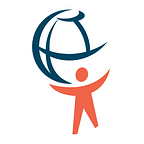Child Sexual Exploitation and Abuse: A Call for a Public Health Perspective
When we think about online or offline child sexual exploitation and abuse (CSEA) we may say to ourselves, “The police need to find those offenders and lock them up!” Often, we consider CSEA a legal problem, emphasizing the need to empower law enforcement to investigate offenders and for prosecutors to seek justice. And while effective legal responses are key to addressing CSEA, they are not the sole solution to combat crimes against children. Increasingly, professionals are recognizing that child sexual exploitation is a complex and multi-faceted public health issue that requires a comprehensive and coordinated effort from various sectors.
The key components of a public health approach to CSEA include:
- A focus on the health and mental health impact of the vulnerable child, their family, and the community at large.
- Addressing the impact of CSEA on entire populations. The impact of one child’s exploitation often has a ripple effect on communities, bringing harm to many different individuals.
- It focuses on the prevention of CSEA.
- It emphasizes multidisciplinary collaboration between professionals in different sectors, with varied perspectives, and roles in the fight against CSEA. This includes law enforcement, prosecutors, child service workers, victim advocates, NGOs, legislators, educators, and health and mental health professionals.
- It advocates for rigorous scientific research that can help inform our efforts to identify, assess and serve vulnerable children, as well as conduct effective criminal investigations and prosecution of offenders. Research gives us the information we need to do our work.
- It prioritizes systematic surveillance so that professionals and the public can obtain accurate information about the prevalence of CSEA around the world, and monitor trends over time.
- It demands that we systematically monitor and evaluate the tools and programs we develop to identify and serve children, families, and communities impacted by CSEA through effective interventions.
A public health approach recognizes that CSEA is not solely a law enforcement problem but a societal issue that requires collective action. By implementing a public health approach, we can create safer environments for children, families, and communities to grow and thrive.
What can you do to advocate for a public health approach to CSEA?
Key strategies and actions include:
- Raise awareness and talk to other people, including friends, family, and colleagues, about the public health approach to CSEA. CSEA is not only a legal issue that focuses on offenders; it is a crisis that has tremendous potential for harm to children, their families, their communities, and society at large.
- Emphasize the need for monitoring and evaluation of all measures that are taken to combat child exploitation. This includes monitoring new legislation for unintended harmful consequences.
- Advocate for budgetary allocations to support CSEA prevention efforts, with mandatory and rigorous evaluation of program impact and outcome.
- Talk to health professionals about the need to educate doctors, nurses, and other healthcare providers, on the physical and mental health effects of CSEA, and the need for those healthcare professionals to play an active role in identifying and serving children at risk.
- Advocate and support the creation of local or state task forces that bring together professionals from multiple fields to collaborate on initiatives to combat CSEA.
A public health approach to CSEA is a collective effort and we all have a role in combatting CSEA globally. Creating awareness, building partnerships, and advocating for change can lead to better protections for children, families, and communities.
Resources
